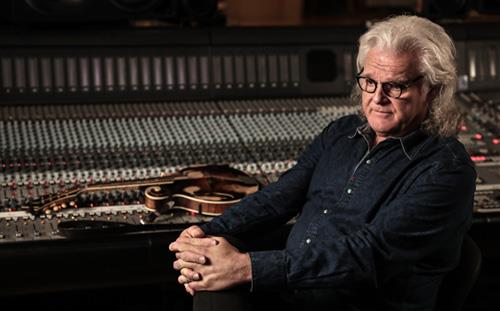
Realistically, most of the folks who watch a new PBS special on bluegrass will probably be folks who already like it.
They should also enjoy Big Family: The Story of Bluegrass Music, which premieres Friday at 9 p.m. ET on PBS (check local listings).
Producers Matt Grimm and Nick Helton use their two hours to promote bluegrass music, always enthusiastically and often exuberantly.
They interview a range of music historians as well as artists like Ricky Skaggs and Del McCoury, most of whom make a point of tying the music back into the show’s title by explaining how the musicians and the audience really do comprise one big and almost always happy family.
It’s a winning argument since the bluegrass community does have a reputation for treating concerts and festivals like family reunions.
What’s also interesting about that assertion, though, is the idea that it needs to be made at all.
Different musical styles and genres, by definition, bring people together, because music is such a powerful cultural glue. From classical fans to hip-hop fans, there’s almost always a sense of family, though it’s also true that some families argue among themselves more than other families.
The family thing here feels, in a sense, like one more way in which bluegrass strives for respect – which is interesting because, as almost every musician and historian says here, it already has that.
In many ways, bluegrass has a shinier image than country music, from which it primarily sprang. It’s seen as more sophisticated, with little of the “rednecks, white socks, and Blue Ribbon beer” aura that country music, despite decades of hard effort, has never completely shaken.
In any case, Big Family focuses primarily on the chronological development and maturity of bluegrass, helped by the fact it has a single widely-acknowledged starting point named Bill Monroe.
Big Family points out that Monroe didn’t create this style of music out of nothing. It emerged largely from classic Scots-Irish folk tradition that flourished in Appalachia early in the 20thcentury, but the documentary notes there was a little more to it than just that.
Country string bands like Charlie Poole’s North Carolina Ramblers recorded fast-picking bluegrass-style fiddle-and-banjo tunes 15 years before Monroe, while Monroe himself was strongly influenced by the African-American blues singers and string bands that also dotted the South during those years.
Monroe blended blues and gospel with country, added high harmonies, sped up the tempo of traditional songs and, together with his brother Charlie, really did shape the bluegrass template we still hear today.
Monroe also gave bluegrass a visual style. Instead of overalls and straw hats, he dressed for the stage in a jacket and tie. This seemingly incidental move had the profound effect of distancing bluegrass quite distinctly from its country cousins.
Big Family notes a number of prominent bluegrass musicians over the years, from Mac Wiseman to Earl Scruggs and Lester Flatt. It particularly notes how Flatt and Scruggs helped cross bluegrass over into the mainstream with the theme song from the smash 1960s TV show The Beverly Hillbillies.
Flatt and Scruggs also figure in the one family argument that Big Family explores: the dispute in the 1960s over whether bluegrass should remain resolutely traditional, as Flatt argued, or whether it should embrace more modern songs and styles, as Scruggs did.
Like many family arguments, this one was never formally settled, except by the course of events. One of the most successful and well-respected bluegrass bands of the 1960s, the Country Gentlemen, started recording songs by the likes of Bob Dylan amidst more traditional bluegrass tunes.
Big Family includes a number of clips from vintage bluegrass performances, and while most are short, they’re a lot of fun. It includes some, perhaps not enough, explorations of the music itself – like how the mandolin in a string band can act as the snare drum, laying down the backbeat.
In the end, Big Family doesn’t quite extricate bluegrass from the niche it has carved for itself over the last 80 years. Happily, it doesn’t have to. As long as toes keep tapping, the niche should remain solid.